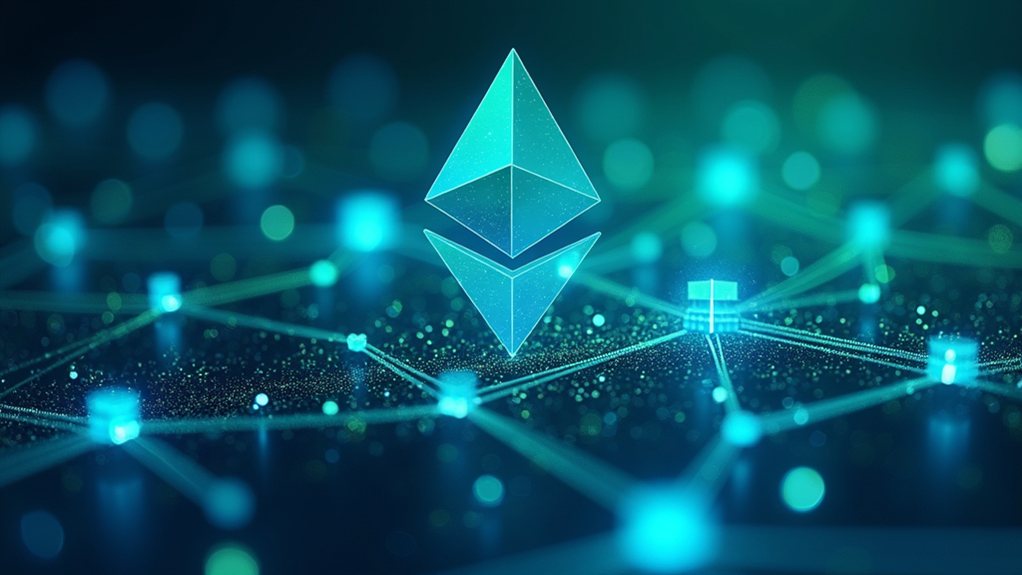Polygon, formerly known as Matic Network, is a Layer 2 scaling solution for Ethereum. It offers faster transactions and lower fees while maintaining Ethereum's security features. Using a Proof-of-Stake consensus mechanism, Polygon can process up to 65,000 transactions per second. The network's native cryptocurrency, MATIC, powers transaction fees and governance. With over 7,000 decentralized applications, Polygon's ecosystem continues expanding through innovative scaling solutions.

Polygon, formerly known as Matic Network, is a Layer 2 scaling solution designed to improve Ethereum's performance. It was originally launched in 2017 as Matic Network before rebranding to Polygon in 2021. The platform aims to address Ethereum's limitations by providing faster transactions, lower fees, and better scalability while maintaining compatibility with Ethereum's ecosystem. Polygon uses a Proof-of-Stake consensus mechanism to validate transactions and secure the network.
Polygon revolutionizes Ethereum with faster, cheaper transactions while preserving ecosystem compatibility through its Layer 2 scaling solution.
The technology behind Polygon consists of several layers working together. It uses sidechains that run parallel to the Ethereum mainnet, along with the Plasma framework for off-chain computation. The platform supports multiple scaling solutions, including Polygon PoS and zkEVM, enabling developers to create customized blockchain networks. The Polygon SDK allows developers to build Ethereum-compatible networks with ease. The architecture includes an Ethereum layer for security, a networks layer for sovereign blockchains, a security layer for validator management, and an execution layer for smart contracts. This four-layer system provides flexibility and enhances scalability. The platform's ambitious development includes plans for cross-chain interoperability to support other blockchain ecosystems beyond Ethereum.
MATIC is the native cryptocurrency of the Polygon network. Users pay transaction fees with MATIC tokens. The token also enables participation in network governance and is required for staking to secure the network. The current price of MATIC stands at approximately $0.72 per token, with significant growth potential according to various forecasts. As an ERC-20 token, MATIC is compatible with Ethereum wallets, making it accessible to a wide range of users.
Polygon offers significant advantages over the Ethereum mainnet. It can process up to 65,000 transactions per second, far exceeding Ethereum's capacity. Users enjoy much lower transaction fees while still benefiting from Ethereum's security features. Developers appreciate Polygon's Ethereum compatibility, which allows them to deploy existing applications with minimal changes.
The ecosystem around Polygon has grown rapidly. Over 7,000 decentralized applications have been deployed on the network as of 2023. Major projects like Aave and OpenSea have integrated with Polygon to offer users faster and cheaper alternatives. The platform supports various use cases including decentralized finance (DeFi) applications, NFT marketplaces, gaming projects, decentralized exchanges, and enterprise blockchain solutions.
Polygon continues to develop new scaling solutions, including ZK-rollups and Optimistic rollups. These technologies compress multiple transactions into a single proof that's verified on the Ethereum mainnet. The platform's focus on interoperability enables communication between multiple blockchain networks, creating a more connected ecosystem.
With its growing developer community, extensive tooling support, and partnerships with leading projects, Polygon has established itself as one of the most important scaling solutions in the blockchain space. It addresses critical limitations of Ethereum while maintaining compatibility with the largest smart contract platform in the world.
Frequently Asked Questions
Is Polygon (MATIC) a Good Investment?
Polygon (MATIC) shows promising technology with fast transactions and low fees as Ethereum's Layer 2 scaling solution.
It's partnered with major companies like Meta and Disney, and has grown 293% since launch.
However, it faces regulatory challenges, competition, and market volatility.
With a $7.1 billion market cap, it's currently ranked in the top 10 cryptocurrencies.
Investors should consider both its potential and risks.
How Do I Stake Polygon (MATIC) Tokens?
Staking Polygon (MATIC) tokens can be done through several methods. Users can directly stake via the Polygon network, delegate to validator nodes, use crypto exchanges, or choose DeFi platforms.
The process typically requires:
- Selecting a compatible wallet like MetaMask or Ledger
- Connecting to Polygon's staking dashboard
- Choosing a validator
- Staking at least 1 MATIC token
The staking process takes 30-40 minutes to complete, with rewards averaging 5-14% APY.
What Major Partnerships Does Polygon Have?
Polygon has secured major partnerships across multiple industries.
Financial giants like JPMorgan and Mastercard use Polygon for tokenization and artist programs.
Tech leaders including Meta, Google Cloud, and Reddit have integrated Polygon's blockchain solutions.
In retail, Nike, Starbucks, and Coca-Cola have launched digital marketplaces and NFTs.
Entertainment partnerships feature Disney, Atari, and Fox News, who've adopted Polygon for gaming and media initiatives.
How Does Polygon Compare to Other Layer 2 Solutions?
Polygon compares favorably to other Layer 2 solutions with its diverse scaling approach.
While Optimism and Arbitrum focus on optimistic rollups, Polygon offers multiple solutions including ZK rollups and Plasma chains.
It's faster than many competitors, processing up to 65,000 transactions per second versus Optimistic rollups' 2,000-4,000 TPS.
Polygon's fees are also lower, typically under $0.01.
It's gained wider adoption with over 7,000 dApps.
Can Polygon Scale Beyond Ethereum to Other Blockchains?
Polygon's expansion beyond Ethereum is already underway.
The company has acquired Hermez Network and partnered with Algorand for interoperability solutions. They're developing cross-chain capabilities through the Polygon SDK and Bridge protocol, which allow for standalone chains that can communicate with each other.
While currently Ethereum-focused, Polygon's collaborations with Binance Smart Chain and planned support for Polkadot parachains show it's building infrastructure to connect multiple blockchain ecosystems.










